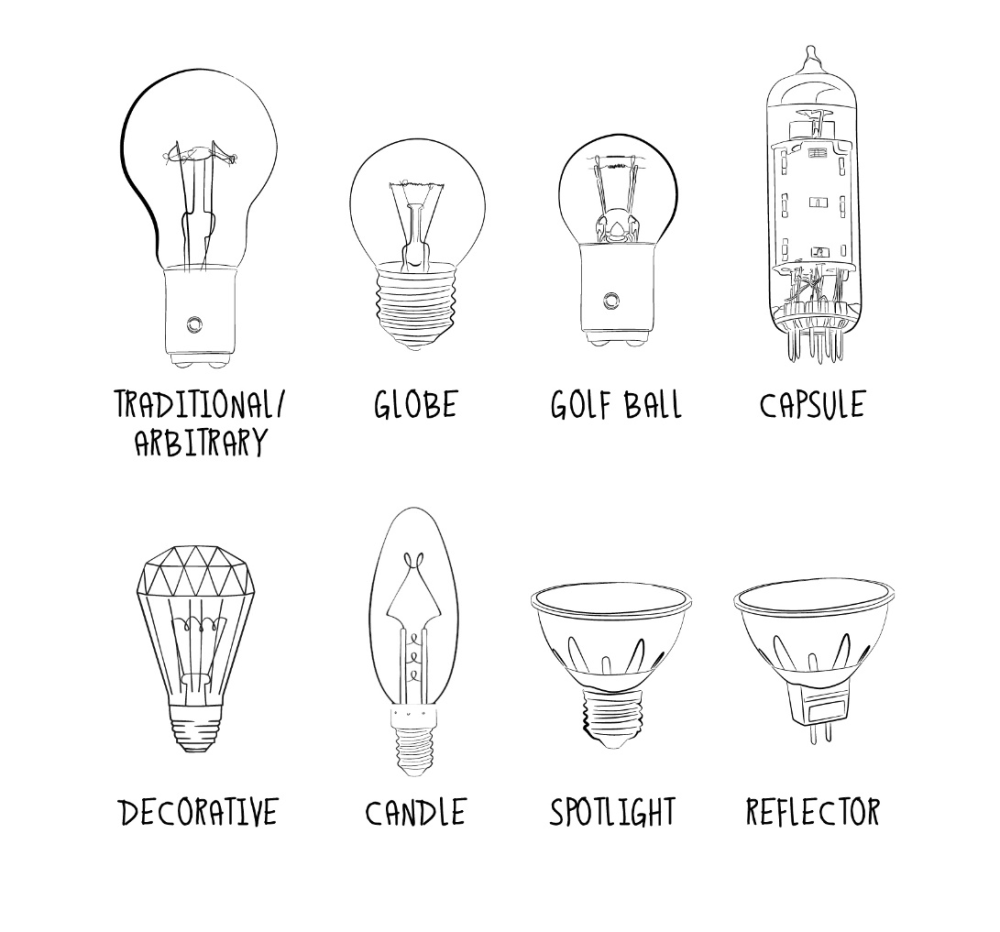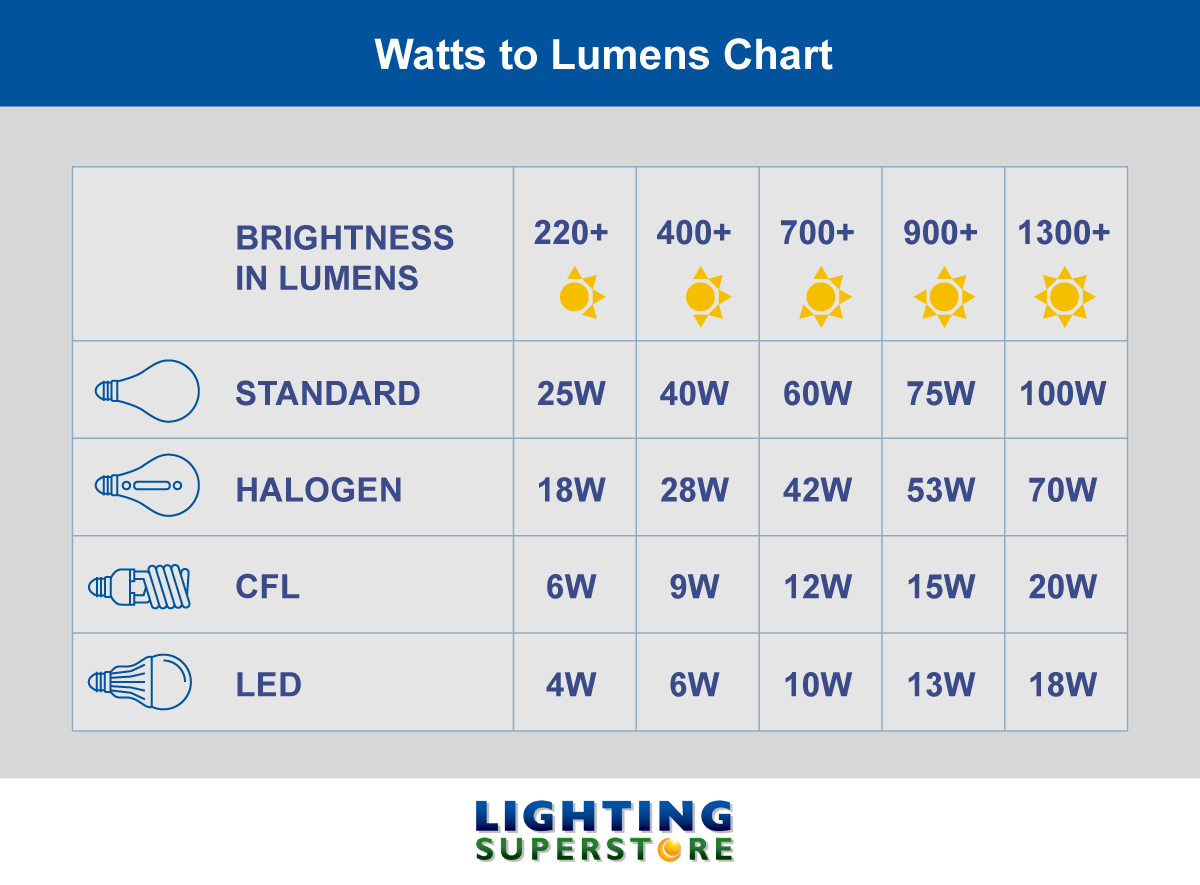The Buyer’s Guide to Light Bulbs
Whether you’ve had a home makeover or just a blown bulb – we’re here to help you find the perfect product to light up your living space.
Use our guide to find the right light bulb product for your needs. You can then shop our range of light bulbs here.
Light bulb technologies
There are four main light bulb technologies – halogen, LED, CFL and incandescent. Here we compare their main properties:
Incandescent light bulbs
These are the traditional light bulbs. They contain a coiled metal filament which is heated to produce light.
They create a warm glow and are fully dimmable, making them ideal for living rooms and bedrooms.
Incandescent light bulbs are being phased out in favour of eco-friendly alternatives. Plus, due to the way they produce light, they become dangerously hot to touch when in use.
Halogen light bulbs
Halogen light bulbs are a type of incandescent bulb, which use halogen gas to keep the bulb shining brighter for longer.
They reach full brightness instantly and are fully dimmable, so they’re perfect for any interior room.
Due to high temperatures they reach, halogen light bulbs come with a stronger glass coating than traditional incandescent bulbs, making them safer to handle.
LED light bulbs
Light-emitting diode (LED) light bulbs are a long-lasting and eco-friendly alternative to traditional incandescent bulbs. They make up for their higher price tag with lower running costs than traditional bulbs.
They become bright instantly when switched on, without needing time to warm up.
LED light bulbs are versatile and able to replicate many colours and temperatures, to match the mood of your home.
CFL light bulbs
Compact fluorescent lamps (CFL) are also an energy-efficient alternative to incandescent bulbs. They create soft, warm light.
They take a short time to warm up and reach their full brightness when switched on and are suited to indoor lighting, unlike LED light bulbs, which perform just as well outdoors.
Because of their mercury content, CFL bulbs need to be recycled, rather than put in a waste bin.
All four light bulb technologies tend to come with one of a few common base types, so you can swap your current light bulb for a different model without having to change the fixture.
Bulb base types
Before you choose your light bulb, make sure the base type will fit your new or existing light fixtures.
The simplest way to make sure your new light bulb will fit is to check your existing product and its packaging, if you still have it to hand.
Compare the shape of the base on your existing bulb or use the code and symbol on the packaging to match up with your new product.
Our handy chart below shows the most common light bulb base types:

You can also get a light bulb converter, which allows you to use your new light bulb with different base fixture types.
Light bulb shapes
Whether you’re after an exact replacement to a blown bulb or fancy a change to add character to your home, it helps to know what you’re looking for.
Here, we’ve put together an illustrated guide to the most common light bulb shapes.

While most bulb shapes a purely decorative, some designs like spotlights are used to highlight or accentuate features around the home.
Shop our range of light bulbs to find the perfect fit for your ceiling light fixtures, lamps, chandeliers and more.
Coloured light bulb glass
Light bulbs are usually made from clear glass so you get the most from its brightness and temperature, but coloured glass also adds character to your home.
Misted or opaque glass light bulbs in amber tones can create a retro feel, even when not switched on – especially when paired with an ornamental fixture or stand.
Coloured light bulbs can be used to create bright light shades in your room, to match your home interior and create a unique atmosphere.
Light bulb brightness
Light bulb brightness is measured in lumens (lm) – the higher the lm number, the brighter the bulb.
You can buy standard light bulbs by lumen count, so you’re able to match your current setting and get the right level of brightness for your room. But depending on the light bulb technology, you’ll see a difference in your power output and electric bills.
Compare the power needed to lighten your home below:

How many lumens you need depends on what you’re using the light for.
Ambient lighting needs to be brighter than accent lighting, which only highlights a smaller area.
For example, a reading lamp, kitchen spotlight or a single bulb on a chandelier will require fewer lumens than a ceiling pendant that lights an entire living room by itself.
It’s also important to consider the beam angle of your light bulb. This is the angle of light it gives off. The larger the beam angle, the more space the light covers.
Spotlights have a narrow beam angle, as they’re designed to highlight specific areas, while ceiling light bulbs have a wider beam angle to create ambient lighting across larger rooms.
Light bulb temperatures
Lighting sets the tone for a room – creating a warm, comforting atmosphere or a bright, energetic vibe. The ‘temperature’ of light is measured in Kelvins – the higher the Kelvins, the crisper and brighter the light.
Use a light’s Kelvin rating to create your ideal atmosphere in each room. A light between around 2,000 – 3,000 Kelvins produces a soft, warming, yellow light, with a measure of around 4,000+ Kelvins giving off a cool, blue light.
Light bulbs with lower Kelvin ratings are perfect for cosy bedrooms or living spaces, with higher ratings suited to open-plan spaces and home offices.
Choosing the right light bulb for your home
Lighting is key in creating the mood in any room. Our tips help you find the perfect products to create comforting bedrooms and set up social spaces.
Bedroom lighting
Choosing a light bulb with a low Kelvin rating creates a warm and cosy bedroom, ideal for relaxing in. You can even personalise your bedroom with coloured light bulbs.
Accent lighting like wall lights can be used to draw attention to personal touches like artwork, calendars and bedside tables.
Floor standing lights with soft, yellow light bulbs are perfect for bedtime reading and are easy on the eyes.
Living room lighting
For cosy living spaces, look for light bulbs with a lower Kelvin rating, to create a relaxing and inviting mood. Larger, open spaces should be kitted out with bright, vibrant lighting to emphasise the space.
Task lighting is ideal for unwinding with a book or magazine, and accent lighting like spotlights personalise your living room, drawing attention to family photos and paintings.
Kitchen lighting
Kitchen lighting should be varied to emphasise different areas of the room. Pendant lights and chandeliers illuminate eating areas, while spotlights and strip lighting can be used to brighten cooking areas and cupboards.
Decorative light bulbs, like candle designs, are ideal for traditional dining areas like kitchen tables.
Bathroom lighting
Keep your bathroom feeling fresh and energetic with bright pendant or strip lighting. Ambient bathroom lighting should have a high Kelvin rating to keep you alert and refreshed.
Create vanity lighting by placing a spotlight over your bathroom mirror, giving you the perfect setting for your morning and bedtime routines.
Home office lighting
Task lighting is key in your home office. Use lamps and spotlights to highlight reading areas.
For your ambient lighting, opt for a high Kelvin rating. This creates a bright and energising setting which is ideal for keeping you motivated and concentrating while working from home.
Outdoor lighting
Create a relaxing garden seating environment with string lighting, coastal lights and garden wall lights. A low Kelvin rating creates a welcoming and comfortable outdoor atmosphere, ideal for summer nights on the decking.
LED floodlights and floor lighting are perfect for marking out walkways and illuminating driveways to keep you safe at night.
Find the perfect light bulb for all your interior and outdoor designs and create the perfect mood anywhere in your home with our range of home lighting products.

